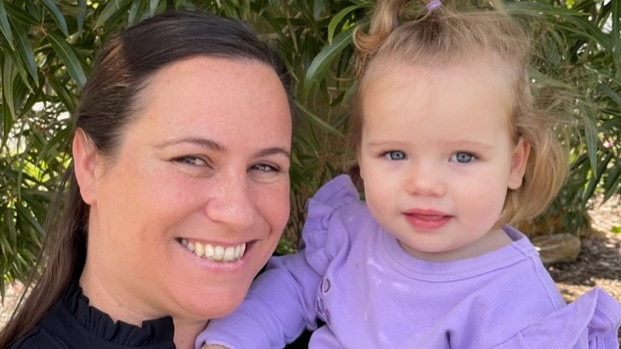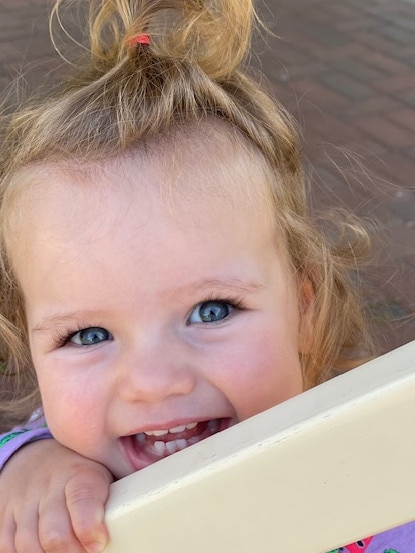WCH’s virtual emergency department has saved 14,247 kids from having to wait in an ED in 15 months
It launched with little fanfare about 15 months ago – now this staggeringly good WCH idea has stopped nearly 15,000 kids clogging up emergency, writes Jess Adamson.
Opinion
Don't miss out on the headlines from Opinion. Followed categories will be added to My News.
There’s something truly amazing happening at our Women’s and Children’s Hospital.
Medicos across the nation are watching a small team of doctors and nurses making history.
In August last year, when Covid was wreaking havoc, this dedicated team set up a virtual emergency department known as the Child and Adolescent Virtual Urgent Care Service, the first in the country.
There was little fanfare, just a single social media post, telling us sick children can now be assessed from the comfort of our homes with the simple click of a link.
If you’ve nursed a child with a fever, worried about a suspected concussion or wondered whether their arm is fractured or not – this service is for you. When you’re not quite sure whether a trip to emergency is necessary, you’ve got other children to care for and you know you’ll be waiting for hours on end, you can click and connect to a team of specialists within minutes.
This is telehealth at its absolute best. It’s a gift from Covid, a bold concept bravely fast-tracked in the most uncertain of times.
And the team did it in just eight weeks from a tiny former nurses’ station within the hospital.
15,840 children have been seen in the virtual ED so far and, of those, only 1593 have been told to go in. That’s a staggering 14,247 children kept out of hospital in just 15 months.
No one wants to see their child carted off by an ambulance and now paramedics are using the service too, calling in to the virtual ED, for assessment on the road.

Of 874 ambulance patients, only 81 have been taken to hospital, leaving 793 ambulances on the road and off the ramp.
Just imagine what the service means for South Australians living in our rural and remote regions.
40 per cent of those accessing the service are from outside the metropolitan area.
WCH clinical services nursing director Kerry McKeough says they’ve saved country patients 910,450km in travel – that’s more than 22 trips around the equator.
That’s a win for the environment and for regional families.
“We are really making a difference for the families that don’t want to be in ED but need to be seen urgently,” she says. “It’s a beautiful service. Our patients are just so grateful.
“We can keep 90 per cent of children out of the ED and that’s helping our colleagues in there too.”
90 per cent of children kept out of the ED. What took us so long?
The team’s also supporting and teaching young rural doctors with online consultations, regularly saving them from sending a child to the WCH “just in case”.
The service is free and takes an average of 40 minutes. Your details are taken, your child triaged by a nurse, put in the virtual waiting room, and if necessary, seen by a doctor via your phone, tablet or computer.
Mother-of-three Cara Flynn called the service when her two-year-old daughter Willa badly injured her elbow after a fall. On the side of the road, from the boot of her car, Cara followed the instructions of nurses in the virtual ED and carefully pulled the elbow back into place.


Jakob De Santis lives at an Adelaide boarding school so when his mum Teresa, who lives north of Darwin, got a call saying he was on his way to hospital with a badly injured hand, she felt helpless.
But within minutes, Teresa was sent a link. When she clicked on it, she was in a virtual consultation with Jakob and his treating doctor, paediatric specialist Dr Priya Wilson.
From the other side of the country, she could see her son and his doctor in real time.
“I was so thankful,” Teresa said.
“I was more than 3000km away but I was given a full explanation and visuals of Jakob’s X-ray, the findings and treatment.”
Little Lottie Green has had 12 different bugs and viruses since starting childcare five months ago.
Mum Laura now regularly uses the virtual ED after finding it almost impossible to get a GP appointment.
“As the mum of a newborn, you don’t want to pass an illness off as just a high temperature, but you don’t want to lug them into hospital where you’ll be surrounded by other sick children,” she says. “It means there’s one less person in the ED so that those who really need to be there, can be there. The staff should be so proud of what they’re doing.”
And they are, particularly after just collecting a National Innovation Award for their efforts.
Our WCH is the first paediatric hospital in Australia to open a virtual ED. Now the Royal Children’s in Melbourne and the Sydney Children’s are following our lead.
Many of us learnt to be comfortable with telehealth during the pandemic and at a time when our hospitals are choking, our ambulances are ramped and our frontline staff are totally ironed out, it should be encouraged. It’s no longer just an option – but a necessity, and a cost-efficient one.
At the Royal Adelaide Hospital, podiatrists, endocrinologists and vascular foot surgeons are virtually treating hundreds of remote Aboriginal and Torres Strait Islanders with diabetes-related problems, allowing them to stay on Country with their families while being cared for. There’s been an increase in the number of Australians seeking help for mental health issues, via telehealth platforms. It’s safe, convenient and easy to access.
And for those men in our lives who despise going to the doctor, it’s a godsend. Quick, easy and private. A farmer sitting on his tractor can have an appointment with a GP without anyone else knowing.
Telemedicine itself isn’t a new concept. It could be argued that Adelaide’s Alf Traeger pioneered it in the 1920s when he invented his pedal radio, a floor-mounted generator driven with bicycle pedals that powered a radio transceiver to send morse code signals. Back then, it allowed outback residents to ask the Reverend John Flynn’s “flying doctor” service for health advice. Now, the Royal Flying Doctor Service is taking telehealth to new heights, installing real-time diagnostic units in its remote clinics – even trialling the use of hi-tech glasses for a patient to show a wound or condition.
In Australia’s biggest waiting room, an area of 7.7 million sqkm, the RFDS is using cameras to conduct oral dental examinations, mental health assessments and general check-ups. They can measure a patient’s blood pressure, temperature and blood sugar – and all of a sudden, for Australians living in the bush, that waiting room doesn’t feel so big.
So if telehealth can slash cost, travel and waiting times, improve equity and comfort and reduce the spread of illness without compromising patient care, let’s ramp it up. Virtual care is not lesser care, it’s just different. While it’s not for everyone, it’s what many want.
Right now, there’s a huge team of experts planning our new WCH, due to be completed by 2030-31.
It can’t be easy knowing what to build as we head towards a golden era of healthcare technology development. But given what we’re seeing now, I hope they dream big.



